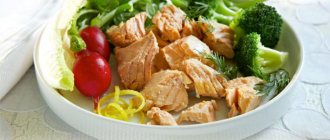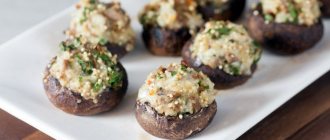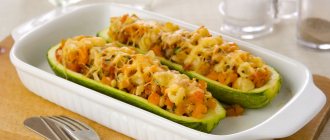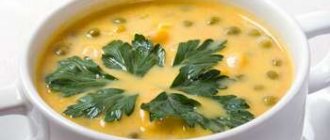Pollock is one of the most used and versatile fish among other fish.
You can prepare it in a variety of ways, and also figure out how many calories will be contained per 100 g serving of this product. Which fish tastes better?
- Cod 49%, 1216 votes
1216 votes 49%1216 votes - 49% of all votes
- Pollock 27%, 670 votes
670 votes 27%
670 votes - 27% of all votes
- Heck 23%, 573 votes
573 votes 23%
573 votes - 23% of all votes
Total votes: 2459
04.12.2019
Ideal fish for losing weight
It is difficult to overestimate the benefits of pollock for human health, since out of the entire vast fish family it is literally a storehouse of vitamins and microelements. Doctors recommend eating this fish for pregnant women and babies aged eight months and older.
Pollock is rich in vitamins of groups A, PP, B1, B2, B9, C, contains calcium, magnesium, phosphorus, sulfur, iron, potassium, cobalt, iodine, fluorine, sodium.
It should be noted that almost the entire amount of vitamin A is concentrated in the liver of fish. So if you have a need for vitamins of this particular group, it is better to specifically buy canned goods with this product.
Due to its unique composition, pollock liver is widely used even in cosmetology - in particular, in the production of anti-aging drugs.
What else will pollock please our body with?
- The iodine contained in fish is considered an excellent remedy for the prevention of thyroid diseases.
- Elements such as calcium, phosphorus and fluoride are responsible for ensuring that a person has strong teeth and a skeletal system.
- Vitamin C helps strengthen the immune system and improves tone.
- Potassium and sodium ensure the prevention of cardiovascular diseases, and cobalt promotes the absorption of iron and normalizes the condition of the circulatory system.
- If pollock is eaten regularly at least twice a week, this will ensure constant maintenance of normal blood sugar levels.
- Also, fish, mainly in its liver, contains Omega-3 and Omega-6 fatty acids. These valuable substances are responsible for stimulating brain function and stabilizing blood pressure, and also eliminate excess cholesterol.
Due to its extremely low calorie content, fish is perfect for people on diets. The fat content of the fillet is no more than 1 percent. At the same time, it contains practically no carbohydrates, but the protein content is extremely high!
Easily digestible proteins account for 16 percent of the total weight of fish. Thanks to this, pollock is respected by athletes who need large quantities of protein for serious physical activity.
Pollock can be harmful, but it affects a fairly narrow group of people. Fish protein often causes a reaction in allergy sufferers, so any type of fish is prohibited for them. Caviar containing a large amount of salt is also harmful. It is better to refrain from using it for people suffering from hypertension and peptic ulcers.
It will be difficult to find another product as healthy and nutritious as pollock, which will also have similar fat content.
- The calorie content per 100 grams of raw fish is only 72 kcal.
- The prepared piece of fish is thrown into boiling water. The water is slightly salted and a bay leaf is added to it for flavor. With this method of preparation, the calorie content of boiled pollock reaches only 79 kcal.
- The energy value of steamed fish will be slightly higher. The calorie content of steamed pollock in a slow cooker is 80 kcal per 100 grams.
- Stewed pollock is definitely dietary - 75.5 kcal.
- You can also make cutlets from minced fish - less than 80 kcal.
If you cook pollock with minimal addition of fat, then any finished dish will have low energy value. For example, if you bake fish in foil without adding oil, then the calorie content per 100 grams will be only 77 kcal. And the simplest recipe for cooking pollock is initially designed for a diet.
Not everyone will like boiled fish; many people prefer to fry it. But the calorie content of fried pollock will not be as low as with previous options for its preparation.
- The energy value of fish cooked in oil will be 100 kcal, and if it is rolled in flour or breadcrumbs - 127-135 kcal.
- It’s even tastier to cook fish in batter - 280 kcal.
- Smoked pollock is high-calorie - 195 kcal per 100 grams.
- Some believe that dried fish is dietary, but in fact, in terms of energy value, it leaves far behind other options for its preparation. The calorie content of dried pollock is 220 kcal.
- The situation is much better with dried fish, its energy value is 127 kcal.
You can find canned pollock on store shelves. In each specific case, the calorie content should be clarified by examining the label on the jar, which must indicate the composition of the product. For example, pollock with added oil has an energy value of 149 kcal.
Pollock liver and caviar are also sold as canned food, which should be discussed separately. Despite the general low energy value of fish, its liver is several times more caloric than meat. But this organ is incredibly useful - it contains more than 30% of the same Omega-3 and Omega-6 fatty acids.
And although 100 grams of pollock liver contains 475 kcal, you should not immediately cross out the product from your menu. When choosing canned food, pay attention to the composition: they should not contain anything except liver and salt.
Advice from nutritionist Irina Shilina
Pay attention to the latest weight loss method. Suitable for those for whom sports activities are contraindicated.
The calorie content of pollock caviar will not be so scary - only 132 kcal per 100 grams. At the same time, the protein content in the same amount reaches 28 grams. But when buying caviar, you must remember that it is contraindicated for hypertensive patients, as well as those suffering from gastritis and peptic ulcers of the gastrointestinal tract.
Pollock fillets or canned pollock fillets are often used to make salads. In these cases, the calorie content always varies, since not only the other ingredients of the dish are important, but also its dressing.
If you use, for example, sour cream, then two spoons of 20 percent dressing will add 86 kcal to the dish. A couple of spoons of mayonnaise will increase the total energy value by 190 kcal. Vegetable oil in two tablespoons already carries 260 kcal.
Delicious dietary dishes
Experts say that it is best to cook pollock using the simplest, most accessible methods, which will only emphasize its pleasant taste and will not add calories.
The taste of the fish is a little dry, so most often housewives prefer to bake it in the oven or stew it with vegetables.
Baked pollock in spicy sauce
For example, for baked pollock in spicy sauce you will need:
- fish fillet - 700 g;
- walnuts - 100 g;
- pickled cucumbers - 2 pcs. (small);
- sour cream - 4 tbsp. l.;
- salt, pepper, fresh herbs - to taste;
- butter - 10 g.
This preparation:
- The fish must be processed, all bones removed, and the fillets cut into medium-sized pieces. The pollock prepared in this way is salted and peppered, then fried in a frying pan in a small amount of oil until golden brown.
- At the same time, the sauce is being prepared. To do this, walnuts, herbs, cucumbers, sour cream and spices are thoroughly ground in a blender.
- The fried fish is laid out on a baking sheet greased with butter and sauce is poured on top.
- The oven should be preheated to 200 degrees. Bake for 25 minutes.
Pollock with vegetables in egg batter
You can also bake pollock with vegetables in egg batter.
- To do this, you need to cut 600-700 grams of fillet into pieces and sprinkle with two tablespoons of lemon juice.
- Then place them in a greased pan.
- On top are three tomatoes cut into circles, sprinkle everything with parsley, salt and pepper. Pour in two beaten chicken eggs.
- Bake for 20-25 minutes in an oven preheated to 200 degrees.
Pollock baked with carrots and onions
For fish baked with carrots and onions, you need:
- pollock - 1 pc. (medium size);
- onion - 1 pc.;
- carrots - 1 pc.;
- sour cream - 50 g;
- salt and pepper - to taste.
Cut the fully processed fish into medium-sized pieces, add salt and pepper. Cut one onion into ring halves, grate the carrots on a coarse grater and place them in layers in a greased form. We put pollock on them.
Pour sour cream and 3-4 tablespoons of boiling water over the fish. Cover the baking dish with foil and place in an oven preheated to 200 degrees for 25-30 minutes.
Pollock in soy sauce
For pollock in soy sauce you need to buy:
- fish - 1 pc.;
- soy sauce - 1 bottle;
- onion - 2 pcs.
This preparation:
- To begin with, the fish is infused in the marinade for half an hour. Thoroughly mix the carcass cut into medium pieces with onion rings, spices and pour soy sauce (150-200 grams).
- Since the sauce itself is quite salty, there is no need to add additional salt.
- After 30 minutes, transfer everything into a baking dish, pour the third part of the marinade there. It is advisable to cover the pan with foil.
- Bake for 30 minutes in an oven preheated to 200 degrees.
Another recipe for pollock with spices will also help brighten up your diet while on a diet. Whole processed fish (its size can reach 45 cm) should be rubbed with salt and pepper. It is sprinkled with 5 grams of dried rosemary on top, poured with a tablespoon of olive oil and sprinkled with the juice of half a lemon. After this, the fish is wrapped in foil and baked in the oven for at least 20 minutes at 150 degrees.
This is a fairly large fish. Scientists classify pollock as a member of the cod fish family. Most individuals reach a length of 45 centimeters. It is mined in large quantities and is often used as a raw material for crab sticks (called surimi). This is a fairly lean fish, so it is excellent for the diet.
The calorie content of pollock is low and equal to 72 kcal per 100 grams of fish.
Nutritional value (per 100 g):
- 16 grams of protein,
- 0 grams carbohydrates,
- 0.9 grams fat.
What are the benefits of pollock?
Of course, like any other sea fish, pollock is very healthy.
Pollock is good in terms of its variety in cooking. How to cook pollock correctly? Very simple, like other types of fish! It can make very tasty fish cutlets, soups, casseroles, and pies. You can also simply bake it in baking foil, a sleeve or in its own juice with vegetables. In refined oriental cuisine, pollock is cooked with soy sauce, which gives the taste a special piquancy.
Rolls with rice
Fillet prepared according to this recipe is an excellent solution for dinner in a narrow family circle and as a holiday treat. The dish is easy and quick to prepare.
List of products:
- 4 pollock fillets;
- 200 grams of short grain rice;
- Half a glass of 35% cream;
- A tablespoon of curry powder;
- 2 tablespoons each of mayonnaise and soy sauce;
- 4 leek leaves.
Detailed recipe:
- The rice must be boiled by adding curry powder.
- Coat the fish fillet with soy sauce and mayonnaise.
- Place boiled rice on the fillet pieces and roll them into rolls.
- Place leek leaves in a baking dish. Place the resulting rolls on them.
- Pour cream over the rolls and bake them in the oven at 190˚C until done.
- Sprinkle the finished rolls with chopped herbs. If desired, add more cream.
A delicious pollock dish is ready! You can set the table and treat it to your household and guests
100 grams of the finished dish contains
- 11 g proteins;
- 10 g fat;
- 14 g carbohydrates.
The calorie content of 100 grams of the dish is 188 Kcal.
Pollock: dietary recipes in the oven
In order to help you diversify your dietary menu, below in this article there will be 10 recipes for dietary pollock dishes that can be cooked in the oven. They are low-calorie and do not contain mayonnaise or other harmful sauces and dressings.
Pollock baked with vegetables in egg batter
Cut 600 grams of pollock fillet. Then sprinkle it with 2 tablespoons of lemon juice and place it in a baking dish, which we have previously greased with oil. Place 3 tomatoes cut into slices on top, pepper, salt (to taste) and sprinkle with chopped parsley. Beat 2 eggs and pour them over our fish fillet. Heat the oven to 200 degrees. Bake the pollock until browned.
Pollock baked with apple juice
We wash 6 pcs. pollock fillet, dry and sprinkle with the juice of ¼ of a lemon, rub with salt and pepper. Next, place the fish on aluminum foil for baking. Don't forget to grease the foil with butter! Pour 5 tablespoons of apple juice over the fish, ring 1 onion and place it on top. Next you need to wrap it all tightly in foil. Bake in the oven for 35-40 minutes at 200 degrees. If you like a golden brown crust, you can unroll the foil 5 minutes before the end of baking.
Pollock with spices
We clean 2 pollock carcasses from scales, remove the fins and chop off the tail. Next, the fish needs to be rinsed under cold water (it is best to have it running). Then rub the fish with pepper, salt and fish seasoning. Sprinkle with 5 g of dried rosemary and drizzle with 1.5 tablespoons of olive oil. To enhance the taste and aroma, squeeze the juice from half a lemon and pour it over our fish. Make sure it is marinated on both sides. Place the fish on foil and wrap it in the form of an envelope. Bake the fish for 15-20 minutes at 150 degrees. When serving, decorate the fish with fresh herbs.
Pollock baked on a bed of carrots and onions
Clean 1 pollock carcass and cut into medium pieces, add salt and pepper. Next, we prepare the vegetable pillow: cut 1 onion into halves of rings, 1 carrot into three on a coarse grater and place them in layers in a greased form. Place chopped pollock fillet on the pillow. Lubricate the fish with 50 grams of sour cream and pour 4 tablespoons of boiling water to help it stew better. Cover the dish with the fish with baking foil and place it in the oven, which needs to be preheated to 200 degrees. Bake for 30 minutes, grate the cheese and bake for another 30 minutes in the oven.
Pollock cutlets baked in the oven
Grind 700 grams of pollock fillet and 100 grams of bread crumb in a blender until minced. To the minced meat add 1 clove of garlic, thyme, parsley, 80 grams of grated cheese and 2 eggs. Stir until smooth. We make cutlets, rolling them in flour. Lightly fry in a dry frying pan or in a small amount of sunflower oil. While the cutlets are frying, you can heat the oven to 180 degrees. Then put them in a mold (grease it with oil) and bake for 20 minutes.
Omelette with pollock in the oven
4 things. pollock fillet mode into small pieces. Beat 4 eggs with a mixer until smooth, add 100 grams of milk with salt and beat a little more. Grate 1 carrot. 1 onion should be cut into cubes. In a greased form, place a layer of vegetables, and pieces of pollock fillet on top of the vegetables. Mix the egg-milk mixture with 150 grams of grated hard cheese and pour over the vegetables and fish. Bake in the oven for 20 minutes at 200 degrees.
Fish and potato casserole
Finely chop 1 onion, peel 500 grams of potatoes and cut into cubes. Fry the potatoes in a frying pan, then add the onion and fry for another 5 minutes. The onion must be constantly stirred so that it does not burn. Vegetables should be golden brown and not completely cooked. Salt! Cut 250 grams of pollock fillet into small pieces. Finely chop a bunch of dill. Mix all the ingredients and place in a greased form. Beat 7-10 eggs with a glass of milk, spices and add salt to taste. Pour the egg mixture over the fish, sprinkle with herbs and bake for 30 minutes at 180 degrees.
Baked pollock in a pot

We clean 3 pollock carcasses and cut them into portions. 3 carrots and 3 onions large mode. Peel 6-9 potatoes and cut into cubes. Place carrots, fish and onions in pots. Top with a couple of spoons of rich sour cream. Our last layer will be potatoes. Add one tablespoon of butter (butter), salt and pepper. Pour in fish broth (about half a glass). Put it in the oven. Bake for 40 minutes at 180 degrees.
Pollock in a sleeve with vegetables
Sprinkle 400 grams of pollock fillet with Provencal herbs on both sides, rub with pepper and salt. Prepare the vegetable layer: wash 1 zucchini well, cut into rings and divide them into 4 more parts; Divide 200 grams of broccoli into inflorescences; 2 tomatoes, sliced mode. Then mix everything in a bowl and add salt. We put vegetables in the sleeve, and pollock fillet on them. We tie the sleeve in the shape of a candy and pierce it with a toothpick to avoid an unexpected explosion during cooking. Place in the oven for 20 minutes. The temperature should not be higher than 180 degrees.
Baked pollock with tomato sauce
We clean 1.5 kg of pollock carcasses and rinse under running cold water. Cut the fish into 3 parts. Place the pieces in the mold so that there is free space between them. 3 carrots need to be washed and peeled, grated on a fine grater and sprinkled on the fish. Pour 5 tablespoons of tomato sauce and salt. 3 onions in half rings and place on top of the sauce. In order to give the fish juiciness, place 70 grams of butter on top. You need to preheat the oven to 170 degrees. Place the form with the fish there for 40 minutes. When there are 10 minutes left until it is fully cooked, sprinkle with 250 grams of grated cheese.
All these recipes are very easy to prepare and do not take much time. And most importantly, they are tasty and healthy. Choose your favorite dish and enjoy your meal!
Pollock is famous not only for its high protein content and lack of carbohydrates. In this article you will find comprehensive information about the calorie content of pollock, and also learn:
- what “medicinal product” contained in pollock will 100% satisfy your daily need for a microelement that promotes weight loss, and why it is beneficial to get it from this particular fish;
- how pollock caviar produces alcohol in the body and why this promotes weight loss;
- why pollock dishes need not be salted, etc.
For a couple
Fish fillets can be cooked in a double boiler, the main thing is not to overcook so that the meat does not become too dry. If you serve steamed cooked fish right away, it will delight you with its juicy taste and is especially useful during weight loss, since the fat content level is no more than 80 kcal. If desired, you can add salt, spices and combine with stew or puree.
Another tasty and healthy option for eating pollock is in the form of snacks. Dried or in the form of straws, this product is quite nutritious and healthy.
The fish itself is caught in the Pacific and Atlantic oceans, and is often used in the preparation of the famous Japanese dish surimi, which often replaces the main composition of crab sticks.

Calorie content, consumption rate and methods of preparing pollock
The calorie content of pollock is 72 kcal per 100 grams.
Consumption rate
depends greatly on various circumstances, but on average the recommended frequency of eating this healthy seafood product is
2 times a week.
Cooking methods
– traditional for most dishes: boiling, frying, baking, drying, canning, steaming. Depending on the chosen method of heat treatment, the ingredients used and parts of the pollock - caviar, liver or fillet - the calorie content of the resulting dishes will vary.
The calorie content of boiled and steamed pollock is approximately the same.
However, fish that has been boiled in a double boiler does not disintegrate until it is ready, which often happens when the product is boiled in a pan.
Calorie table for pollock of different types and cooking methods
| How many calories are in pollock? | Calorie content per 100 grams, kcal |
| Raw pollock fish (pollock fillet) | 72 |
| Steamed pollock | 75 |
| Pollock baked in the oven | 77 |
| Boiled pollock | 79 |
| Stewed pollock | 94 |
| Fried pollock | 111 |
| Pollock caviar | 132 |
| Dried pollock | 221 |
| Pollock in batter | 281 |
| Pollock liver | 474 |
Fried
When fried, pollock can increase the amount of fat content in its composition; it contains more than 100 kcal per 100 gram serving. Since the meat itself is lean, when frying fillets in batter or just fillets in a frying pan, use oil and add various sauces to the finished fish. Before cooking, you can also marinate pollock; often this dish can become the main dish on the holiday table.
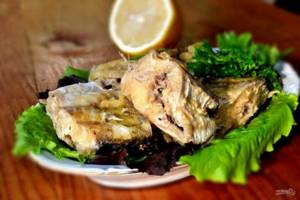
Pollock in dietetics and weight loss
Many diets and nutrition systems include this product and dishes containing it in their menu. Here are just a few of them:
- Protein diet.
- Fish diet, including fasting day.
- Low-carb and no-carb diets.
- Separate meals. Pollock is compatible with green vegetables - both starchy and non-starchy.
- Mono-diet on seafood products. Boiled pollock is recommended as a dinner along with low-fat kefir.
- Weekly diet for weight loss.
In order not to harm your health, enter and exit diets correctly, and also do not abuse the frequency of their use. For example, a “weekly diet” can be done once every six months, and a “seafood mono-diet” should not last longer than 2-4 days.
Calorie content and recipes for popular dishes with pollock
Fried pollock
Ingredients (for 2 servings):
- Pollock carcasses – 200 grams;
- Sunflower oil – 17 grams.
Preparation:
We clean and cut the pollock; Place it on a pre-oiled and heated frying pan and fry the fish on each side until cooked.
Calorie content: 111 kcal per 100 grams.
If fried pollock is cooked with flour, its calorie content will increase to 137 kcal.
Pollock fried in sunflower oil does not contain carbohydrates, which allows this easy-to-prepare dish to be used not only in low-calorie, but also in no-calorie diets.
Pollock in sour cream, baked in the oven (with vegetables and cheese)
Ingredients (for 8 servings):
- Pollock carcasses – 1 kilogram;
- Sour cream and water - 200 milliliters each;
- Onions, cheese, carrots - 100 grams each.
Preparation:
Place the chopped parts of the fish in a greased form; add vegetables; add sour cream and water; sprinkle with cheese; wrap everything in foil and place in an oven preheated to 180 degrees; bake for 20-30 minutes.
Calorie content: 86 kcal per 100 grams
baked dish.
Pollock cutlets
Ingredients (for 6 servings):
- Pollock carcasses – 500 grams;
- Milk – 50 milliliters;
- Sunflower oil – 1-2 teaspoons;
- Onion, loaf - 100 grams each;
- Pepper, salt – 5 grams each;
- Breadcrumbs – 20 grams.
Preparation:
grind chopped pieces of pollock into minced meat; finely chop the onion; soak the loaf in milk and squeeze it out; mix everything, adding spices and salt; form, bread and place the cutlets in a heated and oiled frying pan; fry each piece on both sides.
Calorie content
pollock cutlets:
132 kcal per 100 grams
of finished dish.
Meat, caviar (especially canned) and pollock liver already contain salt. This fish does not need to be salted during cooking.
Steamed pollock
Ingredients (for 6 servings):
- Pollock carcasses – 1 kilogram;
- Pepper, salt (to taste) – 2 grams each;
- Greens (for decorating the prepared dish) – 20 grams.
Preparation:
cut the fish into large pieces; rub with salt and pepper; steam for 20 minutes; remove the pollock from the steamer and let the liquid drain; serve, garnished with greens.
Calorie content: 75 kcal per 100 grams.
Pollock stewed with onions and carrots
Ingredients (for 13 servings):
- Pollock carcasses – 1.5 kilograms;
- Cream and tomato – 50 grams each;
- Sunflower oil – 15 grams;
- Onion – 250 grams;
- Carrots – 100 grams;
- Salt – 1 gram;
- Pepper, spices - to taste.
Preparation:
cut the pollock into small portions and, rubbed with spices, marinate for 20 minutes; finely chop vegetables; mix tomato and cream; first fry the onion, then the carrots and divide the resulting mass into two parts (leave one in the frying pan and the second in a separate plate); place marinated pieces of fish on a vegetable bed and cover with previously fried vegetables; fill everything with a mixture of cream and tomato; simmer for 20-30 minutes.
Calorie content
Stewed pollock with onions and carrots:
per 100 grams – 100 kcal.
Baked
This product is perfectly baked in the oven, you can immediately with or without a potato side dish, laying a layer of onions, cheese, and carrots on top. Pollock in marinade is interesting in taste and simple; the main products include: fish meat itself, flour, water, spices to taste, vegetables, and it is prepared quite quickly and simply. The dish does not contain more fatty acids, but will be rich in healthy microelements, with a calorie content of 90 kcal per 100g.

Nutritional value and chemical composition of pollock
For the calculations, we took the average daily requirement for substances that are necessary for adult men and women engaged primarily in mental work.
How much protein, fat and carbohydrates are in pollock?
What vitamins are contained in pollock?
| Vitamin | Daily value, % |
| 4,60 | 23,0 |
| 0,10 | 6,7 |
| 0,10 | 5,6 |
| 0,10 | 5,0 |
| 0,30 | 2,0 |
| 0,05 | 1,2 |
| 0,01 | 1,1 |
| 0,50 | 0,6 |
What else is pollock fish useful for (main micro- and macroelements)
| Micro or macro element | Quantity, milligrams (per 100 grams of pollock) | Daily value, % |
| Cobalt | 0,02 | 150,0 |
